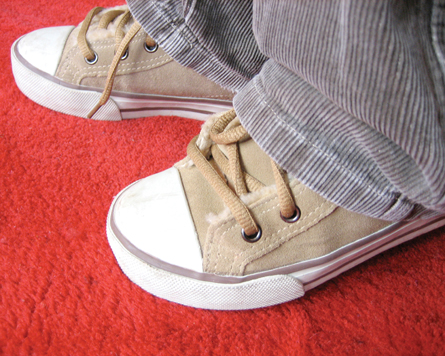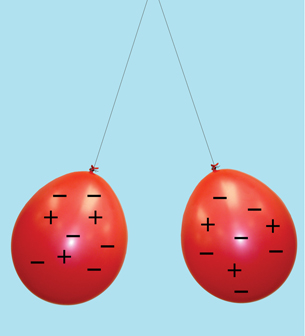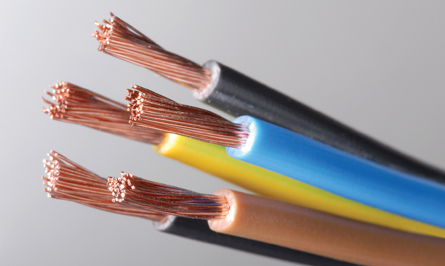Module 3
1. Module 3
1.5. Page 3
Module 3—Electrical Phenomena
The Two Types of Charge

© smithcjb/iStockphoto
People developed an understanding of electricity gradually. Many of the earliest ideas came from everyday experiences. For example, if you scuff your feet while walking over a carpet, you can cause a charge to build up, which leads to a nasty shock when you touch a person or an object. Have you ever used these effects to give yourself or someone else a shock?
You’ll see from reading your textbook that observations from everyday experiences led to a series of experiments. These experiments established that there are, in fact, two types of electric charges.

The positive and negative signs added to these balloons are representations of the relative amount of charge on each balloon.
 Read
Read
Read the information found on the bottom half of page 512 and the top half of page 513 of your textbook. It outlines the contributions of Benjamin Franklin and others to the study of electricity.
 Self-Check
Self-Check
You can check your understanding by answering these questions:
SC 7. Identify the two types of electric charges.
SC 8. Refer to the “infoBIT” on page 513 of your textbook. Suggest a reason why doctors and nurses wear special slippers while working with patients receiving oxygen.
 Self-Check Answers
Self-Check Answers
SC 7. One type of electric charge is positive, while the other type is negative.
SC 8. Since oxygen is an essential reactant for combustion, even the tiniest sparks around patients who are receiving oxygen could create a significant fire hazard. The special slippers prevent the buildup of an electric charge, which could produce sparks that could start a fire.
Conductors and Insulators

© demarcomedia/shutterstock
Today, electricity is essential to almost every daily activity. Whether it’s cooking, listening to music, or communicating with someone far away, electricity is likely involved. Cables, such as the ones shown in this photograph, are found in nearly every modern electrical device. The centre of the cable is made from copper while the outside is covered in a durable plastic coating. How does the arrangement of the electrons within a piece of copper make copper a good material for transferring electrical energy? How does the arrangement of the electrons within a piece of plastic make this material an ideal protective coating for the cable?
 Read
Read
To find out why electrical cables are built from these materials, read “The Modern Theory of Electrostatics” on pages 513 and 514 of your textbook.
 Self-Check
Self-Check
You can check your understanding by answering these questions:
SC 9. Look around at your surroundings.
- Identify two materials that are conductors. Describe the essential characteristic that makes these materials conductors.
- Identify two materials that are insulators. Describe the essential characteristic that makes these materials insulators.
 Self-Check Answers
Self-Check Answers
SC 9.
- Answers will vary depending on your location. Typical examples of conductors might include a metal chair leg or the wires inside the cable of a pair of headphones. In all cases, conductors are metals in which the outermost or valence electrons are held loosely, enabling the material to conduct electricity.
- Answers will vary depending on your location. Typical examples of insulators might include a cushion on a chair or the soles of a pair of shoes. In all cases, insulators are non-metals in which the electrons are bound tightly to the nucleus, preventing the material from being a good conductor of electricity.
SC 10. The outermost electrons in copper atoms are free to move, which makes copper a good conductor. The copper core allows electricity to travel down the centre of the cable.
The outermost electrons in the atoms that form plastics are tightly bound to the nucleus and are not free to move, making plastic a good insulator. The plastic coating prevents the electricity travelling through the core of the cable from passing to unintended places through the walls of the cable.